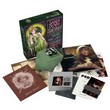
 England - Full Moon 175 - 12/21/10
England - Full Moon 175 - 12/21/10
Sandy Denny
Sandy Denny
Universal/Island Records
This box was originally scheduled for release in the first half of October. It was postponed to late November that was quite appropriate. One of Alexandra Elene MacLean Denny's strongest songs is called
just that, "Late November". Another is "After Halloween"...
Sandy Denny is a massive box with 19 CDs, 302 tracks, about 100 never released earlier, more than 21 hours of music, that try to sum up most of The Lady's recorded career. A bold move! After all, in
her lifetime she only participated on four studio albums and half a live album by Fairport Convention, one by Fotheringay and four solo albums. Also, her participation - mainly solo - on some folk albums
pre-Fairport were gathered on an LP and also recordings with The Strawbs were released on LP some years after they were recorded but before she fell down those stairs, had a brain haemorrhage and passed away
on 21 April 1978. Still, if there's one artist who deserves a box like this, it's her. She was embraced by the critics and connoisseurs from the very start in the small folk clubs in London in the mid 1960s,
but never obtained the massive success she was destined for. Not even posthumous success to the same extent as her contemporary labelmate Nick Drake. The box will probably not put justice to that. It's for
the present and future die-hards. But it may give some more attention to and gain some more supporters of the voice of The Lady. It includes 11 CDs with songs off the albums mentioned above and a posthumously
released live album. Most of them include several bonus tracks including some previously unreleased. The remaining eight discs are filled with more bonus tracks of demos, alternate takes, mixes, BBC sessions and live
recordings including more than 80 previously unreleased. Let's make a short summary, shall we?
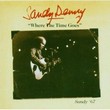 Disc one includes 15 songs The Lady sang on albums by Alex Campbell and Johnny Silvo in 1966/67. Folk-inspired material, but with more American flavour than British, none of them self penned. All
the songs have been released several times earlier. The last album, Where The Time Goes, was complete and included alternative versions of six of the songs. They're all included here except the sixth
where The Lady only sings backing vocals. The standout track is the original "Milk And Honey" written by her boyfriend at the time Jackson C. Frank. Goosebumps stuff. Makes it to my top 20 list. The other Frank
composition here "You Never Wanted Me" ain't half bad either and was later covered by Fairport Convention.
Disc one includes 15 songs The Lady sang on albums by Alex Campbell and Johnny Silvo in 1966/67. Folk-inspired material, but with more American flavour than British, none of them self penned. All
the songs have been released several times earlier. The last album, Where The Time Goes, was complete and included alternative versions of six of the songs. They're all included here except the sixth
where The Lady only sings backing vocals. The standout track is the original "Milk And Honey" written by her boyfriend at the time Jackson C. Frank. Goosebumps stuff. Makes it to my top 20 list. The other Frank
composition here "You Never Wanted Me" ain't half bad either and was later covered by Fairport Convention.
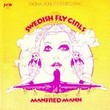
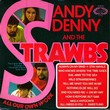 Disc two is the first folk-pop CD and includes all the songs she recorded at a cinema stage in Copenhagen, Denmark with The Strawbs. This means the songs off All Out
Own Work released earlier this year where she didn't participate have been excluded. Standouts: "Who Knows Where The Time Goes?" without strings, brass and harp, "And You Need Me" with strings and "Tell
Me What You See In Me" with sitar. Here's also four tracks off a soundtrack album produced by Manfred Mann for the film Swedish Fly Girls, recorded in 1969 and released in 1971. They're closer to 1960s
singer-songwriter stuff with swingin' London pop arrangements and differ from anything else The Lady ever recorded. Interesting, especially the darker "Are The Judges Sane?" despite an ugly trumpet and dramatic
violins towards the end.
Disc two is the first folk-pop CD and includes all the songs she recorded at a cinema stage in Copenhagen, Denmark with The Strawbs. This means the songs off All Out
Own Work released earlier this year where she didn't participate have been excluded. Standouts: "Who Knows Where The Time Goes?" without strings, brass and harp, "And You Need Me" with strings and "Tell
Me What You See In Me" with sitar. Here's also four tracks off a soundtrack album produced by Manfred Mann for the film Swedish Fly Girls, recorded in 1969 and released in 1971. They're closer to 1960s
singer-songwriter stuff with swingin' London pop arrangements and differ from anything else The Lady ever recorded. Interesting, especially the darker "Are The Judges Sane?" despite an ugly trumpet and dramatic
violins towards the end.
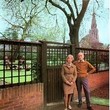
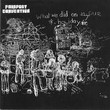 Disc three includes songs recorded for Fairport's What We Did On Our Holidays (released in January 1969) and Unhalfbricking (July 1969). The first track of What We Did... also
starts this disc and now we're really talking! "Fotheringay" (the song, not the band) was one of the first self-penned songs The Lady recorded with the Fairport boys after she joined them, and everything fits:
a melancholic folk-based melody and ditto lyrics (about Mary Queen of Scots locked in her castle called Fotheringay), The Lady sings straight without any vibrato, strong yet restrained and with an exquisite
guitar interplay by Richard Thompson and Simon Nichol. It can hardly get any better. A top 3 song. And there is of course also Fairport's signature song "Meet On The Ledge" written by Richard T. where The Lady
sings along with Ian Matthews, the other vocalist who left the band soon after, another top 20. The two folk-tinged traditionals "Nottamun Town" and "She Moves Through The Fair" and an early version of Joni
Mitchell's "Eastern Rain" are not bad either, not at all. Of the Unhalfbricking tracks "Genesis Hall" (Richard T.), "Autopsy" (Sandy D.), "Who Knows Where The Time Goes?" (Sandy) and "A Sailor's Life"
are the greatest gems. See the review of Liege & Lief for further information on the latter. The British folk-inspiration takes it's grip and the American flavoured songs
(mainly by Bob Dylan) can certainly not compete. There are three songs off What We Did... sung by Ian Matthews solely and are excluded here, whereas Unhalfbricking is complete.
Disc three includes songs recorded for Fairport's What We Did On Our Holidays (released in January 1969) and Unhalfbricking (July 1969). The first track of What We Did... also
starts this disc and now we're really talking! "Fotheringay" (the song, not the band) was one of the first self-penned songs The Lady recorded with the Fairport boys after she joined them, and everything fits:
a melancholic folk-based melody and ditto lyrics (about Mary Queen of Scots locked in her castle called Fotheringay), The Lady sings straight without any vibrato, strong yet restrained and with an exquisite
guitar interplay by Richard Thompson and Simon Nichol. It can hardly get any better. A top 3 song. And there is of course also Fairport's signature song "Meet On The Ledge" written by Richard T. where The Lady
sings along with Ian Matthews, the other vocalist who left the band soon after, another top 20. The two folk-tinged traditionals "Nottamun Town" and "She Moves Through The Fair" and an early version of Joni
Mitchell's "Eastern Rain" are not bad either, not at all. Of the Unhalfbricking tracks "Genesis Hall" (Richard T.), "Autopsy" (Sandy D.), "Who Knows Where The Time Goes?" (Sandy) and "A Sailor's Life"
are the greatest gems. See the review of Liege & Lief for further information on the latter. The British folk-inspiration takes it's grip and the American flavoured songs
(mainly by Bob Dylan) can certainly not compete. There are three songs off What We Did... sung by Ian Matthews solely and are excluded here, whereas Unhalfbricking is complete.
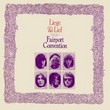 Disc four and here comes the greatest album thrill. We encountered Liege & Lief (December 1969) a year ago and need not mention much now. The disc includes the original album bar the instrumental
medley "The Lark In The Morning"/"Rakish Paddy"/"Foxhunter's Jig"/"Toss The Feathers" without The Lady. Which of course is a shame with an album of such a stature. The only substitute bonus tracks are unreleased
early takes of "Come All Ye" and "Matty Groves". Top 20 candidates include "Reynardine", Farewell, Farewell" and "Tam Lin".
Disc four and here comes the greatest album thrill. We encountered Liege & Lief (December 1969) a year ago and need not mention much now. The disc includes the original album bar the instrumental
medley "The Lark In The Morning"/"Rakish Paddy"/"Foxhunter's Jig"/"Toss The Feathers" without The Lady. Which of course is a shame with an album of such a stature. The only substitute bonus tracks are unreleased
early takes of "Come All Ye" and "Matty Groves". Top 20 candidates include "Reynardine", Farewell, Farewell" and "Tam Lin".
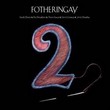
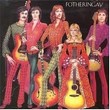 Disc five is dedicated to Fotheringay, the band The Lady and her husband-to-be Trevor Lucas started when she left Fairport. Here it seems much more appropriate only to include the tracks where The
Lady was involved than on the previous disc. This way we avoid five of the American country & western flavoured songs with Australian Trevor L. up front, two from Fotheringay (June 1970) and three from
Fotheringay 2 (September 2008). It doesn't matter that one of his more than decent offerings off the latter is also excluded. If all songs where Trevor dominates had been
dropped, it might've turned the disc into the greatest one in the box. The Lady certainly still had a firm grip on her songwriting and chosen traditionals at the time. Her quiet rolling "The Sea" and the even
more so traditional "Banks Of The Nile" with some stunning guitar work by Trevor and Jerry Donahue is close to stuff that legends are weaved of. Top 10!
Disc five is dedicated to Fotheringay, the band The Lady and her husband-to-be Trevor Lucas started when she left Fairport. Here it seems much more appropriate only to include the tracks where The
Lady was involved than on the previous disc. This way we avoid five of the American country & western flavoured songs with Australian Trevor L. up front, two from Fotheringay (June 1970) and three from
Fotheringay 2 (September 2008). It doesn't matter that one of his more than decent offerings off the latter is also excluded. If all songs where Trevor dominates had been
dropped, it might've turned the disc into the greatest one in the box. The Lady certainly still had a firm grip on her songwriting and chosen traditionals at the time. Her quiet rolling "The Sea" and the even
more so traditional "Banks Of The Nile" with some stunning guitar work by Trevor and Jerry Donahue is close to stuff that legends are weaved of. Top 10!
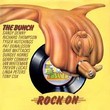
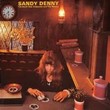 Disc six and The Lady starts her real solo career. She suddenly decided to drop Fotheringay halfway through the recording of the band's second album. It was maybe a good idea after all. Most of the
songs include the band members; even more important Richard Thompson is back and puts his stamp on every song. The North Star Grassman And The Ravens (September 1971) is her last album to be produced
by friend, manager and adviser Joe Boyd. It's more cohesive than the Fotheringay albums. Though it's not without flaws, maybe due to Trevor Lukas' American influences. The two cover versions of the album,
Dylan's "Down The Flood" and "Let's Jump The Broomstick" by Charles Robbins stand out in a negative way. Both with honky-tonk piano. The remaining nine songs are of the classic Denny British folk-flavoured
ilk. "Late November" is the killer; the title track and "Blackwaterside" rank among the top 20. Apart from three bonus tracks, the disc also contains The Lady's involvement in five songs off Rock On
by The Bunch (April 1972), a loose gathering where several former and present Fairport and Fotheringay members recorded an album of classic American 1950s rock'n'roll. It might sound fun, but wasn't the best
of ideas after all. Buddy Holly's "Learning The Game" sounds closer to the average songs by The Lady and works quite well.
Disc six and The Lady starts her real solo career. She suddenly decided to drop Fotheringay halfway through the recording of the band's second album. It was maybe a good idea after all. Most of the
songs include the band members; even more important Richard Thompson is back and puts his stamp on every song. The North Star Grassman And The Ravens (September 1971) is her last album to be produced
by friend, manager and adviser Joe Boyd. It's more cohesive than the Fotheringay albums. Though it's not without flaws, maybe due to Trevor Lukas' American influences. The two cover versions of the album,
Dylan's "Down The Flood" and "Let's Jump The Broomstick" by Charles Robbins stand out in a negative way. Both with honky-tonk piano. The remaining nine songs are of the classic Denny British folk-flavoured
ilk. "Late November" is the killer; the title track and "Blackwaterside" rank among the top 20. Apart from three bonus tracks, the disc also contains The Lady's involvement in five songs off Rock On
by The Bunch (April 1972), a loose gathering where several former and present Fairport and Fotheringay members recorded an album of classic American 1950s rock'n'roll. It might sound fun, but wasn't the best
of ideas after all. Buddy Holly's "Learning The Game" sounds closer to the average songs by The Lady and works quite well.
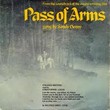
 Disc seven is almost identical to the remastered CD-version from 2005 of The Lady's second solo album Sandy (September 1972) including the two bonus songs she recorded for the short film Pass
Of Arms that was released on a single (1972). Sandy might include the strongest songs on any of her solo albums and the production by Trevor Lucas is not bad. Still there are signs of frustration
and unrest due to lack of commercial success. The stylish front cover is one indication of the move in a more commercial direction. New musical directions like the heavy brass, saxophone and slight reggae
rhythms of "For Nobody To Hear" (I agree!) and straight country of "Tomorrow Is A Long Time" with a sickening steel guitar are the worst. Also, there are a few songs with too heavy string arrangements; the
otherwise impeccable "The Lady" is one of them. "Listen, Listen" with a thousand mandolins in the chorus was released as a single, but seem like a bit too overt attempt towards the hit lists, but without any
success. Otherwise "It'll Take A Long Time", "Sweet Rosemary" and "It Suits Me Well" rank among The Lady's uppermost classics. Even so, "The Quiet Joys Of Brotherhood" is the greatest of them all, unaccompanied folk
solo and duo song with a violin solo by Dave Swarbrick towards the end after the singing. Even so, it can't quite match the Fairport versions form 1969, see disc 13. A bonus version of "The Music Weaver"
without the fur coat as she called it (the strings), only The Lady at the piano and Swarb playing the viola, is also stunning. The two songs from Pass Of Arms are interesting. Modern orchestral string
arrangements around the folk-inspired melodies and song interspersed with some experimental passages, even some electronic elements. Demonstrates yet another different side of The Lady.
Disc seven is almost identical to the remastered CD-version from 2005 of The Lady's second solo album Sandy (September 1972) including the two bonus songs she recorded for the short film Pass
Of Arms that was released on a single (1972). Sandy might include the strongest songs on any of her solo albums and the production by Trevor Lucas is not bad. Still there are signs of frustration
and unrest due to lack of commercial success. The stylish front cover is one indication of the move in a more commercial direction. New musical directions like the heavy brass, saxophone and slight reggae
rhythms of "For Nobody To Hear" (I agree!) and straight country of "Tomorrow Is A Long Time" with a sickening steel guitar are the worst. Also, there are a few songs with too heavy string arrangements; the
otherwise impeccable "The Lady" is one of them. "Listen, Listen" with a thousand mandolins in the chorus was released as a single, but seem like a bit too overt attempt towards the hit lists, but without any
success. Otherwise "It'll Take A Long Time", "Sweet Rosemary" and "It Suits Me Well" rank among The Lady's uppermost classics. Even so, "The Quiet Joys Of Brotherhood" is the greatest of them all, unaccompanied folk
solo and duo song with a violin solo by Dave Swarbrick towards the end after the singing. Even so, it can't quite match the Fairport versions form 1969, see disc 13. A bonus version of "The Music Weaver"
without the fur coat as she called it (the strings), only The Lady at the piano and Swarb playing the viola, is also stunning. The two songs from Pass Of Arms are interesting. Modern orchestral string
arrangements around the folk-inspired melodies and song interspersed with some experimental passages, even some electronic elements. Demonstrates yet another different side of The Lady.
 Disc eight and the downward spiral is more audible. The Lady seems more desperate to find a commercial fundament. Like An Old Fashioned Waltz (June 1974) is filled with nine quite soft ballads
and all of them have string or brass orchestration. As the title suggests, the album have a nostalgic - and seemingly calculated - approach, but still, The Lady has the gift to write sincere songs. The opening
"Solo" is a strong piano based song with a full band, and even the alternate versions of the title track and "No End" sound great, especially the former, only backed by Dave Pegg (bass) and Dave Mattacks
(drums) of Fairport.
Disc eight and the downward spiral is more audible. The Lady seems more desperate to find a commercial fundament. Like An Old Fashioned Waltz (June 1974) is filled with nine quite soft ballads
and all of them have string or brass orchestration. As the title suggests, the album have a nostalgic - and seemingly calculated - approach, but still, The Lady has the gift to write sincere songs. The opening
"Solo" is a strong piano based song with a full band, and even the alternate versions of the title track and "No End" sound great, especially the former, only backed by Dave Pegg (bass) and Dave Mattacks
(drums) of Fairport.

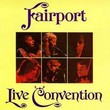 Disc nine deals with The Lady's second slot (or shall we say "Sloth"?) with Fairport Convention. Since she left the band in late 1969, founding members Ashley Hutchins, Richard Thompson and Simon
Nichol had also left and bass player Dave Pegg, Fotheringay guitarists Jerry Donahue and Trevor Lucas had replaced them. The Lady wanted to stay along with her husband, also on tour, and was gradually drawn
in. By March 1974 she was a full member of the band. The first release was Fairport Live Convention (June 1974) recorded on tour in England and Australia shortly before she rejoined on permanent basis.
She participates on four of the nine songs of the original LP and on one of the five bonus tracks on the expanded remastered CD. Of the five contributions by The Lady, "Matty Groves" and "John The Gun" fare
best, as rock solid folk-rock as can be. She was even more centre stage on the next Fairport studio album Rising For The Moon (June 1975). The eight songs The Lady sang, played guitar or piano on (of
11 tracks all together) are also on this disc. Fairport was quite a different beast compared to the one she had left a little more than three years earlier. Most of the magic spark was gone, but the album
has a few gems. Dave Swarbrick's "White Dress" is a mighty little ballad with exquisite mandolin playing and "One More Chance" is one of The Lady's greatest offerings, though the guitar solo at the end lasts
too long. "After Halloween" is fine, but even greater in demo version some years earlier, check out disc fifteen. But our Lady eventually got tired of singing "Matty Groves" over and over again live...
Disc nine deals with The Lady's second slot (or shall we say "Sloth"?) with Fairport Convention. Since she left the band in late 1969, founding members Ashley Hutchins, Richard Thompson and Simon
Nichol had also left and bass player Dave Pegg, Fotheringay guitarists Jerry Donahue and Trevor Lucas had replaced them. The Lady wanted to stay along with her husband, also on tour, and was gradually drawn
in. By March 1974 she was a full member of the band. The first release was Fairport Live Convention (June 1974) recorded on tour in England and Australia shortly before she rejoined on permanent basis.
She participates on four of the nine songs of the original LP and on one of the five bonus tracks on the expanded remastered CD. Of the five contributions by The Lady, "Matty Groves" and "John The Gun" fare
best, as rock solid folk-rock as can be. She was even more centre stage on the next Fairport studio album Rising For The Moon (June 1975). The eight songs The Lady sang, played guitar or piano on (of
11 tracks all together) are also on this disc. Fairport was quite a different beast compared to the one she had left a little more than three years earlier. Most of the magic spark was gone, but the album
has a few gems. Dave Swarbrick's "White Dress" is a mighty little ballad with exquisite mandolin playing and "One More Chance" is one of The Lady's greatest offerings, though the guitar solo at the end lasts
too long. "After Halloween" is fine, but even greater in demo version some years earlier, check out disc fifteen. But our Lady eventually got tired of singing "Matty Groves" over and over again live...
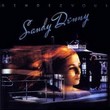 Disc ten is back on the solo track. Well, not right on track. I don't know if it has to do with growing insecurities to find the right career moves, too much smoking, drinking, sniffing or anything
else, but Rendezvous (May 1977) is not up to par. The songs sound weak, especially due to the arrangements that scream of desperation for commercial success. But, of course, the harder she tried, the
more she failed. She has even got that sob in her voice that's common in American country & western. Her voice was certainly intended for other challenges than that... Many considers her version of Elton John's
"Candle In The Wind" (some 20 years later to be renamed "Goodbye England's Rose") as the lowest ebb of The Lady's career. I think "Gold Dust" where she proposes to the American market with some disgusting
funk elements and "All Our Days" with syrupy symphonic orchestration are worse. This is seemingly a Rendezvous best to be forgotten and a good reason why punk was embraced at the time the album was
launched.
Disc ten is back on the solo track. Well, not right on track. I don't know if it has to do with growing insecurities to find the right career moves, too much smoking, drinking, sniffing or anything
else, but Rendezvous (May 1977) is not up to par. The songs sound weak, especially due to the arrangements that scream of desperation for commercial success. But, of course, the harder she tried, the
more she failed. She has even got that sob in her voice that's common in American country & western. Her voice was certainly intended for other challenges than that... Many considers her version of Elton John's
"Candle In The Wind" (some 20 years later to be renamed "Goodbye England's Rose") as the lowest ebb of The Lady's career. I think "Gold Dust" where she proposes to the American market with some disgusting
funk elements and "All Our Days" with syrupy symphonic orchestration are worse. This is seemingly a Rendezvous best to be forgotten and a good reason why punk was embraced at the time the album was
launched.
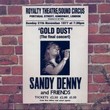 Disc eleven, Gold Dust, Live at the Royalty Theatre/Sound Circus in London on 27 November 1977 was the swan song. It's the recording of The Lady's very last gig, at the end of a short tour
of England. The disc is identical to the album released on CD in June 1998. Due to technical problems on the guitar and backing vocals tracks, most of the guitars were rerecorded by Jerry Donahue and new backing
vocals were provided by Chris Leslie and old Fairport pal Simon Nichol. Generally the versions of songs from Like An Old Fashioned Waltz and Rendezvous sound substantially better in the live
setting than the original studio versions. "I'm A Dreamer" off the latter in particular. And I certainly don't miss neither the brass nor the strings. The older songs on the other hand tend to sound a bit
weaker than the originals. There are lots of guitars around, some a bit heavier than we're used to. A pedal steel guitar played by Pete Wilshire pops up a bit too often for my liking, though. Otherwise she
was backed by her faithful helpers from Fairport and Fotheringay days. Even so, the sparsest arranged songs find The Lady at her very best. "The Lady" with The Lady alone behind her piano is breathtaking.
"Solo" and "The North Star Grassman And The Ravens" with solo piano at the start ain't far behind. And the full band versions of "The Sea" and "One More Chance" also works fine, though the guitar solos at
the end of the latter last too long, yet again.
Disc eleven, Gold Dust, Live at the Royalty Theatre/Sound Circus in London on 27 November 1977 was the swan song. It's the recording of The Lady's very last gig, at the end of a short tour
of England. The disc is identical to the album released on CD in June 1998. Due to technical problems on the guitar and backing vocals tracks, most of the guitars were rerecorded by Jerry Donahue and new backing
vocals were provided by Chris Leslie and old Fairport pal Simon Nichol. Generally the versions of songs from Like An Old Fashioned Waltz and Rendezvous sound substantially better in the live
setting than the original studio versions. "I'm A Dreamer" off the latter in particular. And I certainly don't miss neither the brass nor the strings. The older songs on the other hand tend to sound a bit
weaker than the originals. There are lots of guitars around, some a bit heavier than we're used to. A pedal steel guitar played by Pete Wilshire pops up a bit too often for my liking, though. Otherwise she
was backed by her faithful helpers from Fairport and Fotheringay days. Even so, the sparsest arranged songs find The Lady at her very best. "The Lady" with The Lady alone behind her piano is breathtaking.
"Solo" and "The North Star Grassman And The Ravens" with solo piano at the start ain't far behind. And the full band versions of "The Sea" and "One More Chance" also works fine, though the guitar solos at
the end of the latter last too long, yet again.
If this had been it, we might've concluded that the box tells the story of a unique talent that gradually dwindled in wrong decisions, alcohol and drug abuse. The remaining eight discs of demos, alternate
takes, live recordings etc. also documents that The Lady's unique songwriting talent, vocal abilities, guitar and piano playing didn't deteriorate as time went by. Many of the early and late demos were released
on A Boxful Of Treasures (a five CD-box from 2004). This time around there are quite a few more.
Disc twelve is filled with early home recordings, or demos if you like, preceding the more professional recordings of disc one. The young Sandy singing along to her own acoustic guitar. Some of the recordings
are a bit dodgy, but the majority sounds very well and proves she was an excellent guitar player even at this early stage. Though her vocals has a bit annoying vibrato at the earliest recordings that fortunately
disappeared soon. She sings folk and singer-songwriter stuff, British and American, old traditional and contemporary ones by Jackson C. Frank, Bob Dylan, Bert Jansch, Ann Briggs and others and quite a few
self-penned, some never recorded again. Here are an early version of "Fotheringay" with different lyrics called "Boxful Of Treasures" (that gave name to the above mentioned five CD-box) and a second attempt
with the final lyrics. They're both among the highlights along with Jackson's "Milk And Honey", Jansch's "Soho" and The Lady's own "I Love My True Love" and the traditional "Let No Man Steal Your Thyme". Here's
also an early version of "Carnival", later to be rerecorded for Like An Old Fashioned Waltz. Five of the tracks have never been released earlier. The most interesting of them is no doubt the (possibly)
very first version of "Who Knows Where The Time Goes?" played differently, running faster and less reflective than later recordings of The Lady's signature song.
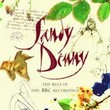 Disc thirteen starts where the previous ended; a couple more home recordings and a second attempt at "Who Knows Where The Time Goes?", also previously unreleased. This one sounds closer to the version
with The Strawbs than the first one. But we soon move into more professionally recorded terrain, a few songs from BBC-sessions, one that didn't appear on the 3 CD/1 DVD box Live At The BBC (yet another
version of "Milk And Honey") and two that have superior sound quality compared to the box. These versions are from home taping of the broadcasts and not the original BBC-tapes that's been lost or erased,
unfortunately, but well worth the inclusion here. The rest of the disc deals with demos, outtakes and alternative versions of recordings with Fairport i 1968 and -69. Unreleased versions of The Lady with her
guitar performing "Fotheringay" and "She Moved Through The Fair" are of special interest. These recordings were later dubbed with other instruments and backing vocals to be featured on What We Did On Our
Holidays. The Lady's demo of "Autopsy" and a version of "A Sailor's Life" without guest at the time Dave Swarbricks violin are also interesting, but not of the same calibre as on Unhalfbricking.
Here are also three songs that was recorded during the Liege & Lief sessions but didn't made it to the album. The version of The Byrds' "The Ballad Of Easy Rider" is great and demonstrates fully that
Fairport at this stage had no problems to turn other artists' songs into their own. It sounds more British than American, not least due to The Lady's vocals. "Sir Patrick Spens" is arch-Bristish folk-rock
of the same calibre as the songs on L. & L. It was recorded anew for Fairport's following album "Full House" after The Lady and Ashley Hutchins had left the band. The greatest doughnut of the disc,
maybe the entire box, though, are two (and a half) takes of "The Quiet Joys Of Brotherhood", an experimental traditional in the same vein as "Reynardine" of the L. & L. album. A strange sounding guitar, not
quite of this world, dramatic partly repetitive tam-tams, drone'ish violin and The Lady's chanting above it all. Spine-chilling! Wonder what this Fairport-line-up could've made it to if it had kept going for
more than five months...
Disc thirteen starts where the previous ended; a couple more home recordings and a second attempt at "Who Knows Where The Time Goes?", also previously unreleased. This one sounds closer to the version
with The Strawbs than the first one. But we soon move into more professionally recorded terrain, a few songs from BBC-sessions, one that didn't appear on the 3 CD/1 DVD box Live At The BBC (yet another
version of "Milk And Honey") and two that have superior sound quality compared to the box. These versions are from home taping of the broadcasts and not the original BBC-tapes that's been lost or erased,
unfortunately, but well worth the inclusion here. The rest of the disc deals with demos, outtakes and alternative versions of recordings with Fairport i 1968 and -69. Unreleased versions of The Lady with her
guitar performing "Fotheringay" and "She Moved Through The Fair" are of special interest. These recordings were later dubbed with other instruments and backing vocals to be featured on What We Did On Our
Holidays. The Lady's demo of "Autopsy" and a version of "A Sailor's Life" without guest at the time Dave Swarbricks violin are also interesting, but not of the same calibre as on Unhalfbricking.
Here are also three songs that was recorded during the Liege & Lief sessions but didn't made it to the album. The version of The Byrds' "The Ballad Of Easy Rider" is great and demonstrates fully that
Fairport at this stage had no problems to turn other artists' songs into their own. It sounds more British than American, not least due to The Lady's vocals. "Sir Patrick Spens" is arch-Bristish folk-rock
of the same calibre as the songs on L. & L. It was recorded anew for Fairport's following album "Full House" after The Lady and Ashley Hutchins had left the band. The greatest doughnut of the disc,
maybe the entire box, though, are two (and a half) takes of "The Quiet Joys Of Brotherhood", an experimental traditional in the same vein as "Reynardine" of the L. & L. album. A strange sounding guitar, not
quite of this world, dramatic partly repetitive tam-tams, drone'ish violin and The Lady's chanting above it all. Spine-chilling! Wonder what this Fairport-line-up could've made it to if it had kept going for
more than five months...
Disc fourteen and back to Fotheringay, the band. Nine of the fourteen tracks are previously unreleased. It starts with three great acoustic vesions of "The Sea", "Winter Winds" and "The Pond And The
Stream", The Lady on her own or accompanied by Trevor Lucas. Stunning! The last two sound as least as good as on the first Fotheringay album. The following full band alternative takes are not that
interesting, yet welcomed all the same. We're also in for six songs recorded live at The Holland Pop Festival in Rotterdam in June 1970. Four of them were included as bonus tracks on the Fedg'ling Records'
2004 CD reissue of Fotheringay. The sound isn't perfect of course, but some goose bump moments all the same. There's even a previously unissued song here "Trouble In Mind" unfortunately it's a forgettable
country flavoured song with Trevor L. more in the spotlight than his Lady. Go instead for the previously unreleased band rehearsal of "Bruton Town", even less perfect recording of a traditional that The Lady
later visited in live settings as a solo artist a couple of years later.
Disc fifteen includes 18 tracks, mainly demos for The North Star Grassman And The Ravens, 12 of the tracks are previously unissued. The first five of them is like discovering the album again with
those sparse versions and the band take of "Next Time Around" without orchestration. The holy grail for The Lady afficiandos is probably a six minutes acapella version of the traditional "Lord Bateman". It was
known it was recorded but thought to be lost, until recently, found on a reel without any labelling. It's probably as surprising as when Nick Drake's very last recording "Tow The Line" was discovered in a similar
manner and released on Made To Love Magic a few years ago. "12th Of Never" is another "lost" song never heard officially earlier, the one and only attempt at the song that was abandoned. Here's also
the soundtrack of three songs recorded for the BBC Television programme One In Ten. On the Live At The BBC box the preformance is featured on the DVD disc. Great solo versions of "The North Star...",
"Crazy Lady Blues" and a hearbreaking "Late November". The disc also features a couple of guest appearances. A tear-dripping duet of "If You Saw Thru My Eyes" with her former singer colleague Ian Mattews from
his album of the same name and a short appearance as the nurse announcing "It's A Boy" from the symphony recording of The Who's Tommy. Her most played appearance of them all on "The Battle Of Evermore"
from Led Zeppelin IV is sadly missed. The disc finishes with three more demos, recorded in the spring of 1972 in preparation of the Sandy album. "Sweet Rosemary" with guitar is great, "The Lady"
on piano even more so; it's surely one of her classics. Last but not least "After Halloween" on guitar. It's an excellent melancholic little ballad that was later recorded with Fairport for the Full Moon
album.
Disc sixteen concentrate on more demos for Sandy and Like An Old Fashioned Waltz with a few alternate takes thrown in for good measure. 15 tracks, about 12 new ones. Sounds great, but cannot
quite match the contents of disc fifteen. I guess it has to do with more band demos and less that are sparser arranged and generally some weaker songs especially on the latter album. "Listen, Listen", "Whispering
Grass" and ""Until The Real Thing Comes Along" sound substantially better than the album counterparts. But the recordings cannot hide the fact that The Lady has moved into more commercial terrain that doesn't
fit her. The latter two try to bring out some nostalgic feelings, reminices of immediate pre or post Second World War Britain. She didn't master this task as well as the much older stuff she performed or her
best self-penned classics way above time. Here are also new demo recordings of "Sweet Rosemary" and "The Lady" that sound quite similar to the ones at the end of disc fifteen; the latter a little less gloomy,
though. The best tracks include a laid-back "It'll Take A Long Time" performed by a quartet whereas there are steel guitar and organ in addition on the recording on Sandy, which means more available
space for Richard Thompson's unique guitar playing. A piano and solo "The Music Weaver" is another goodie whereas "It Suits Me Well" with only The Lady on piano and Richard T. on acoustic guitar is even better.
But again the price for the best song of the disc goes to "The Quiet Joys Of Brotherhood", solo singing over one organ note/drone. Spectacular!
Disc seventeen is mainly dedicated to Fairport Convention live at the LA Troubadour on 1 April 1974; 11 songs and eight of them have been locked in the vaults until now. Four of the five songs from
Fairport Live Convention on disc nine are also here. This is not my favourite hour in the box. Some of the songs are a bit spoilt by a too loud steel stringed acoustic guitar, "Who Knows Where The Time
Goes?" are among them. But some of The Lady's other own songs shine bright, not least "Solo" and "John The Gun" yet again. The best is an almost acapella version of "She Moves Through The Fair" with some help
from Dave Swarbrick's fiddle. There's also a nice unreleased demo of "What Is True?" on the disc, represented in full band version on Rising For The Moon, with only The Lady singing and The Husband
playing acoustic guitar; more singer-songwriter than folk-rock. And eventually a couple of entertaining unreleased BBC interviews from 1974, too, one with John Peel. She admits she used to have great problems
to sing and play the piano at the same time!
Disc eighteen concentrates on recordings from the Rendezvous-era. 19 tracks, 13 previously unreleased. The start of the disc is about stunning; the soundtrack of two songs from a solo Granada
Television appearance from 1975. "Blackwaterside" with guitar and "No More Sad Refrains" sound as good as her BBC TV appearance in 1971. "No More Sad..." along with an acoustic demo of "By The Time It Gets
Dark" from April 1976 prove Rendezvous had some great songs after all (well, the latter was recorded for, but never included on that album). Many of the following outtakes on the disc are spoilt
by either weak songs, a hoarse country-sounding voice or those awful horns, strings or (even) organ arrangements for Rendezvous or a combination of them. In between is a real choral version of "All Our
Days" (planned for but not used on Rendezvous), at least this is something completely different, a sincere "Full Moon" and a band outtake of "Moments", probably meant for a next album that never was
to be. The real gem here, though, is another version of "Moments" where The Lady sings accompanied by Trevor Lucas, Ralph McTell and Phil Palmer on acoustic guitars. Heartbreaking, not only because it was the Lady's very last
studio recording.
Disc nineteen gathers the demos The Lady recorded solo at home in Byfield between 1974 and 1977. 19 tracks all together, 16 different songs,
most of them with The Lady behind the piano. 14 of the tracks has been released earlier, the majority on the fifth bonus/demo disc of A Boxful
Of Treasures. The more I listen to these songs, the better they work. If only some of them had been gathered on a real solo album instead of
Rendezvous. It might have changed The Lady's career completely and at least given her last years a better reputation in retrospect. It's difficult
to pick favourites, but an unreleased "After Halloween" on guitar keeps spinning in my head after having played the disc. And there is a piano
version of "One More Chance" without any too long guitar solo, two versions of a melancholic, but not too melancholic "No, More Sad Refrains",
even "All Our Days" and ... almost the lot. Of the previously unissued tracks "King And Queen Of England" and the only take of "Makes Me Think
Of You" are among the most forgettable, but of special interest to Sandy devotees. The former is the first take of a demo that only was attempted
twice. The second and previously issued version is also represented here and sounds somewhat different. The song is not The Lady's most catchy at
first listen, but definitely a grower. It's not quite correct that "Makes Me Think Of You" is previously unissued. It was included on an Australian
cassette in 1994, The Attic Tracks Vol. 4. Anyway it's more like a sketch than a finished song, and The Crazy Lady accompany herself on electric
guitar, no less. Anyway, the song seems to be the last one she wrote. The lyrics are the last entry in her last notebook.
I guess disc nineteen will be the one I visit most frequently in the box. It displays a strong, yet vulnerable artist at her very best. And there
is something special about her piano playing; no one does it with the same characteristics as her; and I like it.
To summarise, Sandy Denny, the box, doesn't include the entire recorded career of The Lady. At least you need to invest in the 4 disc
boxes both called Live At The BBC of Sandy and Fairport respectively. And The Airing Cupboard Tapes '71-'74 (released on cassette in 1981, CD
with bonus tracks in 2002 and LP a year or two ago) includes a few live-recordings with The Lady in charge. For us Norwegians Fairport's Many
Ears To Please, Live In Oslo 1975 is mandatory; for Fairport fanatics, too, as it's the only official album with roadie Paul Warren on drums.
He joined for a quick European tour in the winter of 1975 shortly after Dave Mattacks had left the band half way through the recording of Rising
For The Moon. It includes a few songs the band didn't play the previous year, too. Also, the title track from Fairport's post and pre Denny era
Rosie (March 1973) where she, Richard and Linda Thompson and others joined the current struggling band, and Zep's aforementioned "Battle Of Evermore"
ought to have been thrown in for good measure. There are several other guest spots, of course.
The box also include some previously unpublished photos, copy of some of her notebook pages, a big poster for The North Star Grassman And
The Ravens and a seventysomething pages hardback book with lots of photos, information and homages payed by other artists, both of her own
generation and a new one fascinated or inspired by her, including John Renbourn (of The Pentangle who went to the same art school as her,
along with Jimmy Page and Eric Clapton), Judy Collins, Dave Cousins (of The Strawbs), Bob Harris (of the BBC), Richard and Linda Thompson,
Maddy Prior (of Steeleye Span), Robert Plant (of Led Zep), Marc Almond, Bill Drummond (Big In Japan, KLF etc.) and Joanna Newsom. I miss
some information of when the songs were recorded, who played on all of them (some misses here) and where they have been issued earlier.
That apart, Sandy Denny is great news for all Sandy Denny devotees, old, new and young. Let's finish with the words of Bill Drummond: Other generations may have had Ian Curtis or Kurt Cobain, but for me the voice of Sandy Denny is enough for my life time.
PS! There's little about The Lady's lyrics here and not too much accompanying the box either. Let's finish with one example:
You make me nervous when I see you.
I can't imagine what it's like to be you.
It's a mystery to me every day,
And I've got to get away.
I put a bet on with a bookie
For the race they put on over in Kentucky.
It's lovely at this time of year, so they say,
And I've got to get away.
I'm a dreamer, and you know
I'm a schemer with an eye for a show.
It's my imagination when I get low,
And the truth is I don't think I'll ever go.
When the music's playing, that's when it changes,
And no longer do we seen like total strangers.
It's all those words which always get in the way
Of what you want to say.
When I wake up in the morning
I think it only fair to give you warning
I probably won't go away,
I'll more than likely stay.
(Sandy Denny ca. early 1976)
Copyright © 2010 JP 
|

 Disc one includes 15 songs The Lady sang on albums by Alex Campbell and Johnny Silvo in 1966/67. Folk-inspired material, but with more American flavour than British, none of them self penned. All
the songs have been released several times earlier. The last album, Where The Time Goes, was complete and included alternative versions of six of the songs. They're all included here except the sixth
where The Lady only sings backing vocals. The standout track is the original "Milk And Honey" written by her boyfriend at the time Jackson C. Frank. Goosebumps stuff. Makes it to my top 20 list. The other Frank
composition here "You Never Wanted Me" ain't half bad either and was later covered by Fairport Convention.
Disc one includes 15 songs The Lady sang on albums by Alex Campbell and Johnny Silvo in 1966/67. Folk-inspired material, but with more American flavour than British, none of them self penned. All
the songs have been released several times earlier. The last album, Where The Time Goes, was complete and included alternative versions of six of the songs. They're all included here except the sixth
where The Lady only sings backing vocals. The standout track is the original "Milk And Honey" written by her boyfriend at the time Jackson C. Frank. Goosebumps stuff. Makes it to my top 20 list. The other Frank
composition here "You Never Wanted Me" ain't half bad either and was later covered by Fairport Convention.
 Disc two is the first folk-pop CD and includes all the songs she recorded at a cinema stage in Copenhagen, Denmark with The Strawbs. This means the songs off
Disc two is the first folk-pop CD and includes all the songs she recorded at a cinema stage in Copenhagen, Denmark with The Strawbs. This means the songs off 
 Disc three includes songs recorded for Fairport's What We Did On Our Holidays (released in January 1969) and Unhalfbricking (July 1969). The first track of What We Did... also
starts this disc and now we're really talking! "Fotheringay" (the song, not the band) was one of the first self-penned songs The Lady recorded with the Fairport boys after she joined them, and everything fits:
a melancholic folk-based melody and ditto lyrics (about Mary Queen of Scots locked in her castle called Fotheringay), The Lady sings straight without any vibrato, strong yet restrained and with an exquisite
guitar interplay by Richard Thompson and Simon Nichol. It can hardly get any better. A top 3 song. And there is of course also Fairport's signature song "Meet On The Ledge" written by Richard T. where The Lady
sings along with Ian Matthews, the other vocalist who left the band soon after, another top 20. The two folk-tinged traditionals "Nottamun Town" and "She Moves Through The Fair" and an early version of Joni
Mitchell's "Eastern Rain" are not bad either, not at all. Of the Unhalfbricking tracks "Genesis Hall" (Richard T.), "Autopsy" (Sandy D.), "Who Knows Where The Time Goes?" (Sandy) and "A Sailor's Life"
are the greatest gems. See the review of
Disc three includes songs recorded for Fairport's What We Did On Our Holidays (released in January 1969) and Unhalfbricking (July 1969). The first track of What We Did... also
starts this disc and now we're really talking! "Fotheringay" (the song, not the band) was one of the first self-penned songs The Lady recorded with the Fairport boys after she joined them, and everything fits:
a melancholic folk-based melody and ditto lyrics (about Mary Queen of Scots locked in her castle called Fotheringay), The Lady sings straight without any vibrato, strong yet restrained and with an exquisite
guitar interplay by Richard Thompson and Simon Nichol. It can hardly get any better. A top 3 song. And there is of course also Fairport's signature song "Meet On The Ledge" written by Richard T. where The Lady
sings along with Ian Matthews, the other vocalist who left the band soon after, another top 20. The two folk-tinged traditionals "Nottamun Town" and "She Moves Through The Fair" and an early version of Joni
Mitchell's "Eastern Rain" are not bad either, not at all. Of the Unhalfbricking tracks "Genesis Hall" (Richard T.), "Autopsy" (Sandy D.), "Who Knows Where The Time Goes?" (Sandy) and "A Sailor's Life"
are the greatest gems. See the review of  Disc four and here comes the greatest album thrill. We encountered Liege & Lief (December 1969) a year ago and need not mention much now. The disc includes the original album bar the instrumental
medley "The Lark In The Morning"/"Rakish Paddy"/"Foxhunter's Jig"/"Toss The Feathers" without The Lady. Which of course is a shame with an album of such a stature. The only substitute bonus tracks are unreleased
early takes of "Come All Ye" and "Matty Groves". Top 20 candidates include "Reynardine", Farewell, Farewell" and "Tam Lin".
Disc four and here comes the greatest album thrill. We encountered Liege & Lief (December 1969) a year ago and need not mention much now. The disc includes the original album bar the instrumental
medley "The Lark In The Morning"/"Rakish Paddy"/"Foxhunter's Jig"/"Toss The Feathers" without The Lady. Which of course is a shame with an album of such a stature. The only substitute bonus tracks are unreleased
early takes of "Come All Ye" and "Matty Groves". Top 20 candidates include "Reynardine", Farewell, Farewell" and "Tam Lin".
 Disc five is dedicated to Fotheringay, the band The Lady and her husband-to-be Trevor Lucas started when she left Fairport. Here it seems much more appropriate only to include the tracks where The
Lady was involved than on the previous disc. This way we avoid five of the American country & western flavoured songs with Australian Trevor L. up front, two from Fotheringay (June 1970) and three from
Disc five is dedicated to Fotheringay, the band The Lady and her husband-to-be Trevor Lucas started when she left Fairport. Here it seems much more appropriate only to include the tracks where The
Lady was involved than on the previous disc. This way we avoid five of the American country & western flavoured songs with Australian Trevor L. up front, two from Fotheringay (June 1970) and three from

 Disc six and The Lady starts her real solo career. She suddenly decided to drop Fotheringay halfway through the recording of the band's second album. It was maybe a good idea after all. Most of the
songs include the band members; even more important Richard Thompson is back and puts his stamp on every song. The North Star Grassman And The Ravens (September 1971) is her last album to be produced
by friend, manager and adviser Joe Boyd. It's more cohesive than the Fotheringay albums. Though it's not without flaws, maybe due to Trevor Lukas' American influences. The two cover versions of the album,
Dylan's "Down The Flood" and "Let's Jump The Broomstick" by Charles Robbins stand out in a negative way. Both with honky-tonk piano. The remaining nine songs are of the classic Denny British folk-flavoured
ilk. "Late November" is the killer; the title track and "Blackwaterside" rank among the top 20. Apart from three bonus tracks, the disc also contains The Lady's involvement in five songs off Rock On
by The Bunch (April 1972), a loose gathering where several former and present Fairport and Fotheringay members recorded an album of classic American 1950s rock'n'roll. It might sound fun, but wasn't the best
of ideas after all. Buddy Holly's "Learning The Game" sounds closer to the average songs by The Lady and works quite well.
Disc six and The Lady starts her real solo career. She suddenly decided to drop Fotheringay halfway through the recording of the band's second album. It was maybe a good idea after all. Most of the
songs include the band members; even more important Richard Thompson is back and puts his stamp on every song. The North Star Grassman And The Ravens (September 1971) is her last album to be produced
by friend, manager and adviser Joe Boyd. It's more cohesive than the Fotheringay albums. Though it's not without flaws, maybe due to Trevor Lukas' American influences. The two cover versions of the album,
Dylan's "Down The Flood" and "Let's Jump The Broomstick" by Charles Robbins stand out in a negative way. Both with honky-tonk piano. The remaining nine songs are of the classic Denny British folk-flavoured
ilk. "Late November" is the killer; the title track and "Blackwaterside" rank among the top 20. Apart from three bonus tracks, the disc also contains The Lady's involvement in five songs off Rock On
by The Bunch (April 1972), a loose gathering where several former and present Fairport and Fotheringay members recorded an album of classic American 1950s rock'n'roll. It might sound fun, but wasn't the best
of ideas after all. Buddy Holly's "Learning The Game" sounds closer to the average songs by The Lady and works quite well.
 Disc seven is almost identical to the remastered CD-version from 2005 of The Lady's second solo album Sandy (September 1972) including the two bonus songs she recorded for the short film Pass
Of Arms that was released on a single (1972). Sandy might include the strongest songs on any of her solo albums and the production by Trevor Lucas is not bad. Still there are signs of frustration
and unrest due to lack of commercial success. The stylish front cover is one indication of the move in a more commercial direction. New musical directions like the heavy brass, saxophone and slight reggae
rhythms of "For Nobody To Hear" (I agree!) and straight country of "Tomorrow Is A Long Time" with a sickening steel guitar are the worst. Also, there are a few songs with too heavy string arrangements; the
otherwise impeccable "The Lady" is one of them. "Listen, Listen" with a thousand mandolins in the chorus was released as a single, but seem like a bit too overt attempt towards the hit lists, but without any
success. Otherwise "It'll Take A Long Time", "Sweet Rosemary" and "It Suits Me Well" rank among The Lady's uppermost classics. Even so, "The Quiet Joys Of Brotherhood" is the greatest of them all, unaccompanied folk
solo and duo song with a violin solo by Dave Swarbrick towards the end after the singing. Even so, it can't quite match the Fairport versions form 1969, see disc 13. A bonus version of "The Music Weaver"
without the fur coat as she called it (the strings), only The Lady at the piano and Swarb playing the viola, is also stunning. The two songs from Pass Of Arms are interesting. Modern orchestral string
arrangements around the folk-inspired melodies and song interspersed with some experimental passages, even some electronic elements. Demonstrates yet another different side of The Lady.
Disc seven is almost identical to the remastered CD-version from 2005 of The Lady's second solo album Sandy (September 1972) including the two bonus songs she recorded for the short film Pass
Of Arms that was released on a single (1972). Sandy might include the strongest songs on any of her solo albums and the production by Trevor Lucas is not bad. Still there are signs of frustration
and unrest due to lack of commercial success. The stylish front cover is one indication of the move in a more commercial direction. New musical directions like the heavy brass, saxophone and slight reggae
rhythms of "For Nobody To Hear" (I agree!) and straight country of "Tomorrow Is A Long Time" with a sickening steel guitar are the worst. Also, there are a few songs with too heavy string arrangements; the
otherwise impeccable "The Lady" is one of them. "Listen, Listen" with a thousand mandolins in the chorus was released as a single, but seem like a bit too overt attempt towards the hit lists, but without any
success. Otherwise "It'll Take A Long Time", "Sweet Rosemary" and "It Suits Me Well" rank among The Lady's uppermost classics. Even so, "The Quiet Joys Of Brotherhood" is the greatest of them all, unaccompanied folk
solo and duo song with a violin solo by Dave Swarbrick towards the end after the singing. Even so, it can't quite match the Fairport versions form 1969, see disc 13. A bonus version of "The Music Weaver"
without the fur coat as she called it (the strings), only The Lady at the piano and Swarb playing the viola, is also stunning. The two songs from Pass Of Arms are interesting. Modern orchestral string
arrangements around the folk-inspired melodies and song interspersed with some experimental passages, even some electronic elements. Demonstrates yet another different side of The Lady. Disc eight and the downward spiral is more audible. The Lady seems more desperate to find a commercial fundament. Like An Old Fashioned Waltz (June 1974) is filled with nine quite soft ballads
and all of them have string or brass orchestration. As the title suggests, the album have a nostalgic - and seemingly calculated - approach, but still, The Lady has the gift to write sincere songs. The opening
"Solo" is a strong piano based song with a full band, and even the alternate versions of the title track and "No End" sound great, especially the former, only backed by Dave Pegg (bass) and Dave Mattacks
(drums) of Fairport.
Disc eight and the downward spiral is more audible. The Lady seems more desperate to find a commercial fundament. Like An Old Fashioned Waltz (June 1974) is filled with nine quite soft ballads
and all of them have string or brass orchestration. As the title suggests, the album have a nostalgic - and seemingly calculated - approach, but still, The Lady has the gift to write sincere songs. The opening
"Solo" is a strong piano based song with a full band, and even the alternate versions of the title track and "No End" sound great, especially the former, only backed by Dave Pegg (bass) and Dave Mattacks
(drums) of Fairport.
 Disc nine deals with The Lady's second slot (or shall we say "Sloth"?) with Fairport Convention. Since she left the band in late 1969, founding members Ashley Hutchins, Richard Thompson and Simon
Nichol had also left and bass player Dave Pegg, Fotheringay guitarists Jerry Donahue and Trevor Lucas had replaced them. The Lady wanted to stay along with her husband, also on tour, and was gradually drawn
in. By March 1974 she was a full member of the band. The first release was Fairport Live Convention (June 1974) recorded on tour in England and Australia shortly before she rejoined on permanent basis.
She participates on four of the nine songs of the original LP and on one of the five bonus tracks on the expanded remastered CD. Of the five contributions by The Lady, "Matty Groves" and "John The Gun" fare
best, as rock solid folk-rock as can be. She was even more centre stage on the next Fairport studio album Rising For The Moon (June 1975). The eight songs The Lady sang, played guitar or piano on (of
11 tracks all together) are also on this disc. Fairport was quite a different beast compared to the one she had left a little more than three years earlier. Most of the magic spark was gone, but the album
has a few gems. Dave Swarbrick's "White Dress" is a mighty little ballad with exquisite mandolin playing and "One More Chance" is one of The Lady's greatest offerings, though the guitar solo at the end lasts
too long. "After Halloween" is fine, but even greater in demo version some years earlier, check out disc fifteen. But our Lady eventually got tired of singing "Matty Groves" over and over again live...
Disc nine deals with The Lady's second slot (or shall we say "Sloth"?) with Fairport Convention. Since she left the band in late 1969, founding members Ashley Hutchins, Richard Thompson and Simon
Nichol had also left and bass player Dave Pegg, Fotheringay guitarists Jerry Donahue and Trevor Lucas had replaced them. The Lady wanted to stay along with her husband, also on tour, and was gradually drawn
in. By March 1974 she was a full member of the band. The first release was Fairport Live Convention (June 1974) recorded on tour in England and Australia shortly before she rejoined on permanent basis.
She participates on four of the nine songs of the original LP and on one of the five bonus tracks on the expanded remastered CD. Of the five contributions by The Lady, "Matty Groves" and "John The Gun" fare
best, as rock solid folk-rock as can be. She was even more centre stage on the next Fairport studio album Rising For The Moon (June 1975). The eight songs The Lady sang, played guitar or piano on (of
11 tracks all together) are also on this disc. Fairport was quite a different beast compared to the one she had left a little more than three years earlier. Most of the magic spark was gone, but the album
has a few gems. Dave Swarbrick's "White Dress" is a mighty little ballad with exquisite mandolin playing and "One More Chance" is one of The Lady's greatest offerings, though the guitar solo at the end lasts
too long. "After Halloween" is fine, but even greater in demo version some years earlier, check out disc fifteen. But our Lady eventually got tired of singing "Matty Groves" over and over again live... Disc ten is back on the solo track. Well, not right on track. I don't know if it has to do with growing insecurities to find the right career moves, too much smoking, drinking, sniffing or anything
else, but Rendezvous (May 1977) is not up to par. The songs sound weak, especially due to the arrangements that scream of desperation for commercial success. But, of course, the harder she tried, the
more she failed. She has even got that sob in her voice that's common in American country & western. Her voice was certainly intended for other challenges than that... Many considers her version of Elton John's
"Candle In The Wind" (some 20 years later to be renamed "Goodbye England's Rose") as the lowest ebb of The Lady's career. I think "Gold Dust" where she proposes to the American market with some disgusting
funk elements and "All Our Days" with syrupy symphonic orchestration are worse. This is seemingly a Rendezvous best to be forgotten and a good reason why punk was embraced at the time the album was
launched.
Disc ten is back on the solo track. Well, not right on track. I don't know if it has to do with growing insecurities to find the right career moves, too much smoking, drinking, sniffing or anything
else, but Rendezvous (May 1977) is not up to par. The songs sound weak, especially due to the arrangements that scream of desperation for commercial success. But, of course, the harder she tried, the
more she failed. She has even got that sob in her voice that's common in American country & western. Her voice was certainly intended for other challenges than that... Many considers her version of Elton John's
"Candle In The Wind" (some 20 years later to be renamed "Goodbye England's Rose") as the lowest ebb of The Lady's career. I think "Gold Dust" where she proposes to the American market with some disgusting
funk elements and "All Our Days" with syrupy symphonic orchestration are worse. This is seemingly a Rendezvous best to be forgotten and a good reason why punk was embraced at the time the album was
launched. Disc eleven, Gold Dust, Live at the Royalty Theatre/Sound Circus in London on 27 November 1977 was the swan song. It's the recording of The Lady's very last gig, at the end of a short tour
of England. The disc is identical to the album released on CD in June 1998. Due to technical problems on the guitar and backing vocals tracks, most of the guitars were rerecorded by Jerry Donahue and new backing
vocals were provided by Chris Leslie and old Fairport pal Simon Nichol. Generally the versions of songs from Like An Old Fashioned Waltz and Rendezvous sound substantially better in the live
setting than the original studio versions. "I'm A Dreamer" off the latter in particular. And I certainly don't miss neither the brass nor the strings. The older songs on the other hand tend to sound a bit
weaker than the originals. There are lots of guitars around, some a bit heavier than we're used to. A pedal steel guitar played by Pete Wilshire pops up a bit too often for my liking, though. Otherwise she
was backed by her faithful helpers from Fairport and Fotheringay days. Even so, the sparsest arranged songs find The Lady at her very best. "The Lady" with The Lady alone behind her piano is breathtaking.
"Solo" and "The North Star Grassman And The Ravens" with solo piano at the start ain't far behind. And the full band versions of "The Sea" and "One More Chance" also works fine, though the guitar solos at
the end of the latter last too long, yet again.
Disc eleven, Gold Dust, Live at the Royalty Theatre/Sound Circus in London on 27 November 1977 was the swan song. It's the recording of The Lady's very last gig, at the end of a short tour
of England. The disc is identical to the album released on CD in June 1998. Due to technical problems on the guitar and backing vocals tracks, most of the guitars were rerecorded by Jerry Donahue and new backing
vocals were provided by Chris Leslie and old Fairport pal Simon Nichol. Generally the versions of songs from Like An Old Fashioned Waltz and Rendezvous sound substantially better in the live
setting than the original studio versions. "I'm A Dreamer" off the latter in particular. And I certainly don't miss neither the brass nor the strings. The older songs on the other hand tend to sound a bit
weaker than the originals. There are lots of guitars around, some a bit heavier than we're used to. A pedal steel guitar played by Pete Wilshire pops up a bit too often for my liking, though. Otherwise she
was backed by her faithful helpers from Fairport and Fotheringay days. Even so, the sparsest arranged songs find The Lady at her very best. "The Lady" with The Lady alone behind her piano is breathtaking.
"Solo" and "The North Star Grassman And The Ravens" with solo piano at the start ain't far behind. And the full band versions of "The Sea" and "One More Chance" also works fine, though the guitar solos at
the end of the latter last too long, yet again. Disc thirteen starts where the previous ended; a couple more home recordings and a second attempt at "Who Knows Where The Time Goes?", also previously unreleased. This one sounds closer to the version
with The Strawbs than the first one. But we soon move into more professionally recorded terrain, a few songs from BBC-sessions, one that didn't appear on the 3 CD/1 DVD box Live At The BBC (yet another
version of "Milk And Honey") and two that have superior sound quality compared to the box. These versions are from home taping of the broadcasts and not the original BBC-tapes that's been lost or erased,
unfortunately, but well worth the inclusion here. The rest of the disc deals with demos, outtakes and alternative versions of recordings with Fairport i 1968 and -69. Unreleased versions of The Lady with her
guitar performing "Fotheringay" and "She Moved Through The Fair" are of special interest. These recordings were later dubbed with other instruments and backing vocals to be featured on What We Did On Our
Holidays. The Lady's demo of "Autopsy" and a version of "A Sailor's Life" without guest at the time Dave Swarbricks violin are also interesting, but not of the same calibre as on Unhalfbricking.
Here are also three songs that was recorded during the Liege & Lief sessions but didn't made it to the album. The version of The Byrds' "The Ballad Of Easy Rider" is great and demonstrates fully that
Fairport at this stage had no problems to turn other artists' songs into their own. It sounds more British than American, not least due to The Lady's vocals. "Sir Patrick Spens" is arch-Bristish folk-rock
of the same calibre as the songs on L. & L. It was recorded anew for Fairport's following album "Full House" after The Lady and Ashley Hutchins had left the band. The greatest doughnut of the disc,
maybe the entire box, though, are two (and a half) takes of "The Quiet Joys Of Brotherhood", an experimental traditional in the same vein as "Reynardine" of the L. & L. album. A strange sounding guitar, not
quite of this world, dramatic partly repetitive tam-tams, drone'ish violin and The Lady's chanting above it all. Spine-chilling! Wonder what this Fairport-line-up could've made it to if it had kept going for
more than five months...
Disc thirteen starts where the previous ended; a couple more home recordings and a second attempt at "Who Knows Where The Time Goes?", also previously unreleased. This one sounds closer to the version
with The Strawbs than the first one. But we soon move into more professionally recorded terrain, a few songs from BBC-sessions, one that didn't appear on the 3 CD/1 DVD box Live At The BBC (yet another
version of "Milk And Honey") and two that have superior sound quality compared to the box. These versions are from home taping of the broadcasts and not the original BBC-tapes that's been lost or erased,
unfortunately, but well worth the inclusion here. The rest of the disc deals with demos, outtakes and alternative versions of recordings with Fairport i 1968 and -69. Unreleased versions of The Lady with her
guitar performing "Fotheringay" and "She Moved Through The Fair" are of special interest. These recordings were later dubbed with other instruments and backing vocals to be featured on What We Did On Our
Holidays. The Lady's demo of "Autopsy" and a version of "A Sailor's Life" without guest at the time Dave Swarbricks violin are also interesting, but not of the same calibre as on Unhalfbricking.
Here are also three songs that was recorded during the Liege & Lief sessions but didn't made it to the album. The version of The Byrds' "The Ballad Of Easy Rider" is great and demonstrates fully that
Fairport at this stage had no problems to turn other artists' songs into their own. It sounds more British than American, not least due to The Lady's vocals. "Sir Patrick Spens" is arch-Bristish folk-rock
of the same calibre as the songs on L. & L. It was recorded anew for Fairport's following album "Full House" after The Lady and Ashley Hutchins had left the band. The greatest doughnut of the disc,
maybe the entire box, though, are two (and a half) takes of "The Quiet Joys Of Brotherhood", an experimental traditional in the same vein as "Reynardine" of the L. & L. album. A strange sounding guitar, not
quite of this world, dramatic partly repetitive tam-tams, drone'ish violin and The Lady's chanting above it all. Spine-chilling! Wonder what this Fairport-line-up could've made it to if it had kept going for
more than five months...